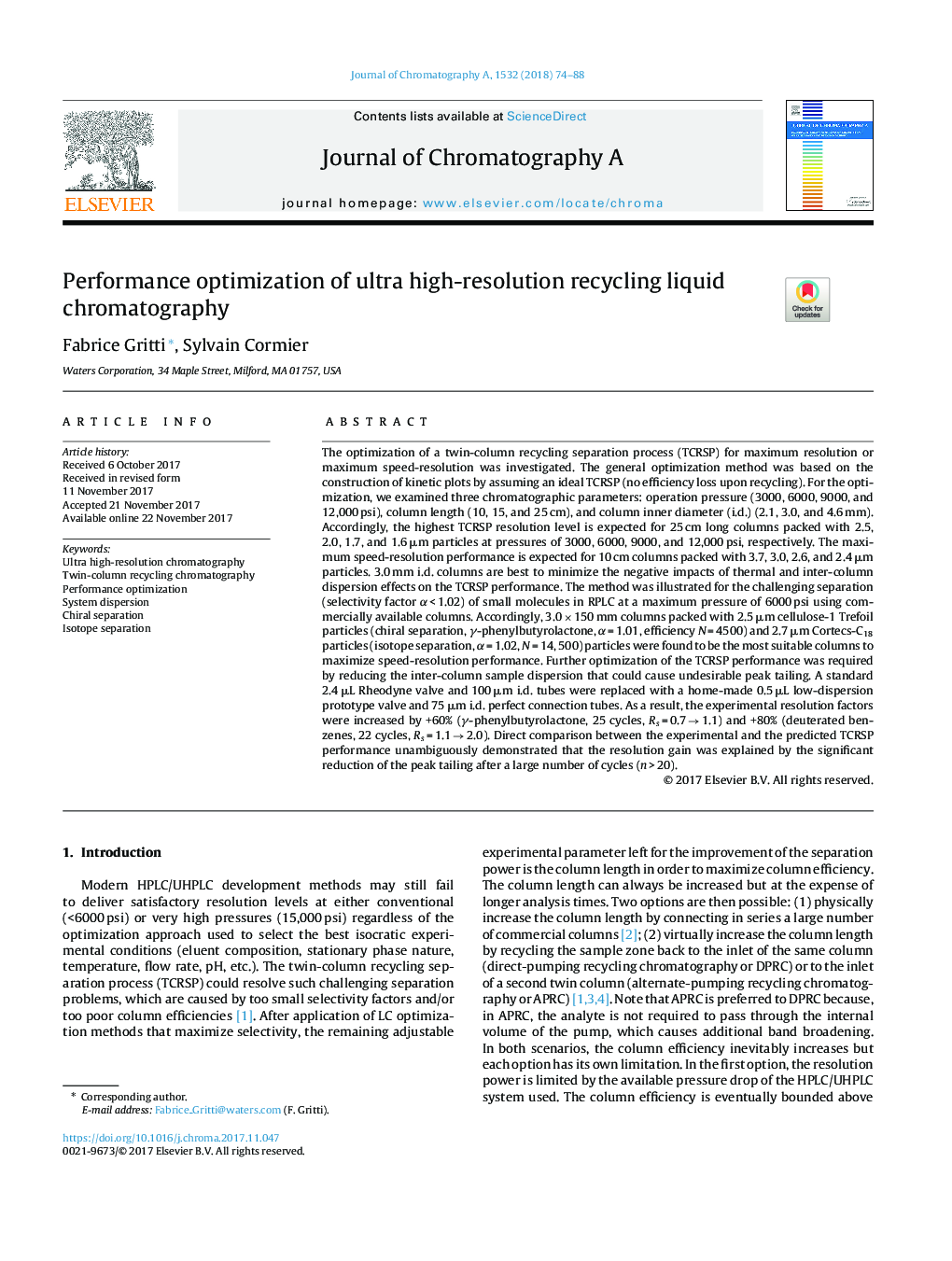| Article ID | Journal | Published Year | Pages | File Type |
|---|---|---|---|---|
| 7609201 | Journal of Chromatography A | 2018 | 15 Pages |
Abstract
The optimization of a twin-column recycling separation process (TCRSP) for maximum resolution or maximum speed-resolution was investigated. The general optimization method was based on the construction of kinetic plots by assuming an ideal TCRSP (no efficiency loss upon recycling). For the optimization, we examined three chromatographic parameters: operation pressure (3000, 6000, 9000, and 12,000 psi), column length (10, 15, and 25 cm), and column inner diameter (i.d.) (2.1, 3.0, and 4.6 mm). Accordingly, the highest TCRSP resolution level is expected for 25 cm long columns packed with 2.5, 2.0, 1.7, and 1.6 μm particles at pressures of 3000, 6000, 9000, and 12,000 psi, respectively. The maximum speed-resolution performance is expected for 10 cm columns packed with 3.7, 3.0, 2.6, and 2.4 μm particles. 3.0 mm i.d. columns are best to minimize the negative impacts of thermal and inter-column dispersion effects on the TCRSP performance. The method was illustrated for the challenging separation (selectivity factor α < 1.02) of small molecules in RPLC at a maximum pressure of 6000 psi using commercially available columns. Accordingly, 3.0 Ã 150 mm columns packed with 2.5 μm cellulose-1 Trefoil particles (chiral separation, γ-phenylbutyrolactone, α = 1.01, efficiency N = 4500) and 2.7 μm Cortecs-C18 particles (isotope separation, α = 1.02, N = 14, 500) particles were found to be the most suitable columns to maximize speed-resolution performance. Further optimization of the TCRSP performance was required by reducing the inter-column sample dispersion that could cause undesirable peak tailing. A standard 2.4 μL Rheodyne valve and 100 μm i.d. tubes were replaced with a home-made 0.5 μL low-dispersion prototype valve and 75 μm i.d. perfect connection tubes. As a result, the experimental resolution factors were increased by +60% (γ-phenylbutyrolactone, 25 cycles, Rs = 0.7 â 1.1) and +80% (deuterated benzenes, 22 cycles, Rs = 1.1 â 2.0). Direct comparison between the experimental and the predicted TCRSP performance unambiguously demonstrated that the resolution gain was explained by the significant reduction of the peak tailing after a large number of cycles (n > 20).
Related Topics
Physical Sciences and Engineering
Chemistry
Analytical Chemistry
Authors
Fabrice Gritti, Sylvain Cormier,
